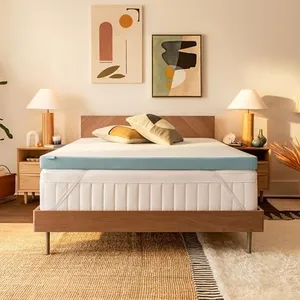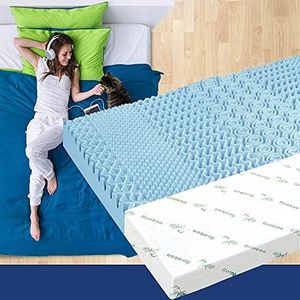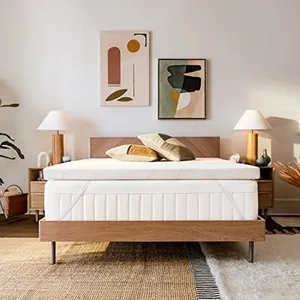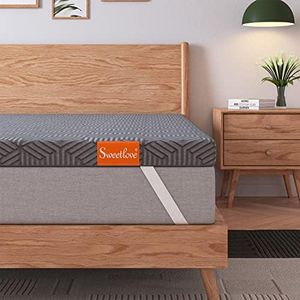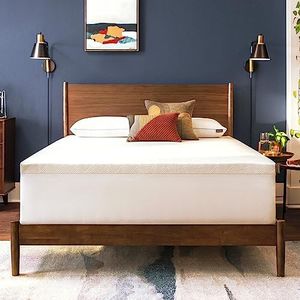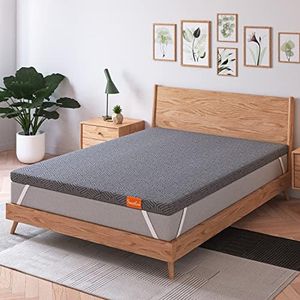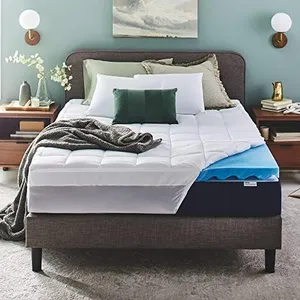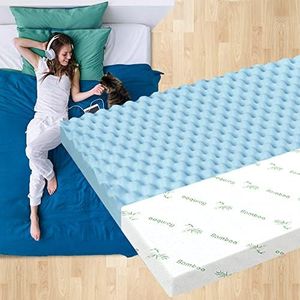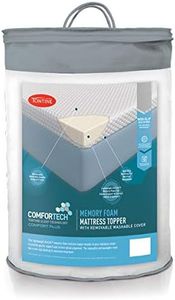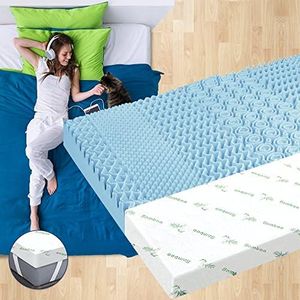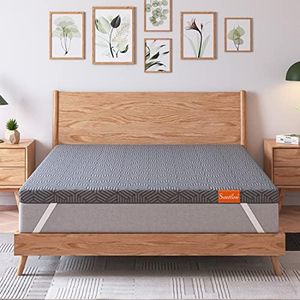We Use CookiesWe use cookies to enhance the security, performance,
functionality and for analytical and promotional activities. By continuing to browse this site you
are agreeing to our privacy policy
10 Best Foam Mattress Toppers
From leading brands and best sellers available on the web.By clicking on a link to a third party's website, log data is shared with that third party.
Buying Guide for the Best Foam Mattress Toppers
When choosing a foam mattress topper, it's all about enhancing the comfort and support of your existing mattress. Foam toppers can make a firm bed feel softer, or give an old mattress new life by reducing pressure points. To find the best fit for you, pay close attention to the main specs like thickness, foam type, density, firmness, and breathability. These features influence both immediate comfort and long-term sleep quality, so understanding them is key to making an informed decision.ThicknessThickness refers to how tall the topper is, typically ranging from 1 to 4 inches. Thicker toppers offer more cushioning and are great for side sleepers or if your mattress is very firm or worn out, as they can provide better pressure relief. Thinner toppers (1-2 inches) are best if you just want a subtle touch of softness or to fine-tune a bed that’s already quite comfortable. Consider your existing mattress’s condition and your personal comfort needs to decide on thickness—thicker for a dramatic change, thinner for just a bit of extra comfort.
Foam TypeThe main types are memory foam and polyurethane foam. Memory foam molds to your shape and is great for pressure relief and motion isolation, making it a good choice if you move a lot at night or share your bed. Polyurethane foam tends to be more bouncy and less contouring, and usually costs less. If support and a ‘hugging’ feel are important, choose memory foam. If you prefer more traditional softness and less sink-in, go with polyurethane or basic foam.
DensityDensity refers to how much material is packed into the foam and is measured in pounds per cubic foot. Higher-density foam (above 4 lb/ft³) lasts longer, supports more weight, and offers deeper contouring, which is good for people who want durability or have joint pain. Medium-density foam (about 3-4 lb/ft³) offers a balance between comfort and support, ideal for most sleepers. Low-density foam (below 3 lb/ft³) feels softer and lighter, but will wear out faster. If you want long-term use and greater support, go for higher density. For occasional or guest use, low or medium density is sufficient.
FirmnessFirmness determines how hard or soft the topper feels. Softer toppers suit side sleepers or those with joint pain, as they allow shoulders and hips to sink in comfortably. Firmer toppers are better for back and stomach sleepers, providing more even support and preventing sagging. Consider your sleep position: side sleepers often prefer a plush feel, while back and stomach sleepers need more firmness to keep their spine aligned.
BreathabilityBreathability refers to how well the topper lets air pass through, affecting how cool or warm you feel during sleep. Some foams tend to trap heat, so look for features like open-cell structures, gel infusions, or ventilation holes if you sleep hot. If you often wake up sweaty or live in a warm climate, prioritize breathable designs. If temperature isn’t much of a concern, you can focus more on other features.
Cover MaterialSome toppers come with removable covers made from fabrics like cotton, bamboo, or polyester. These covers can add softness, help with moisture wicking, and protect the foam. If you have allergies, consider hypoallergenic or washable covers for ease of maintenance. Picking the right cover can make upkeep easier and improve the comfort of the topper.
